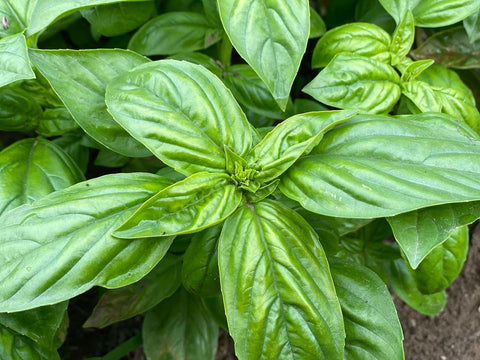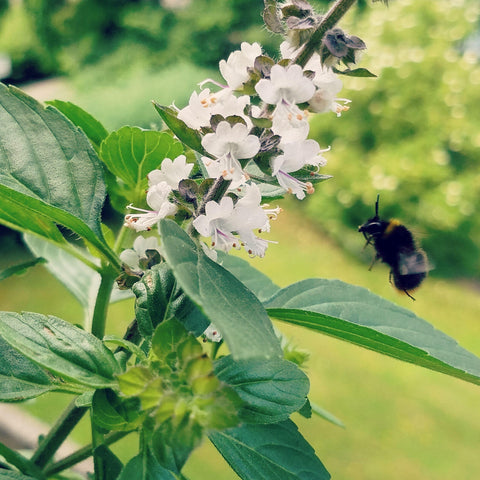Basil flowers add a delightful touch to salads and teas, yet harvesting them also benefits the growth and aroma of the green leaves, a culinary delight in their own right. The age-old dilemma arises when basil starts to bloom – should we pinch those blossoms or let them flourish? In this blog, we explore the art of maintaining robust basil growth while navigating the decision to pinch or not to pinch. Let's unravel the secrets behind basil flowers and discover the best practices for a thriving herb garden.

Are you ready to enhance the flavor of your dishes and infuse your tea with the essence of basil? Let's dive into the world of basil cultivation!

When basil starts flowering, it becomes a magnet for beneficial pollinators. The sweet fragrance and vibrant flowers attract bees and other insects, serving as a boon for your other plants and aiding in increased fruit production. However, flowering also signals reproduction, which is unnecessary in a plant grown for its leaves. Removing the blossoms upon first sight helps maintain the spiciness of the leaves, as allowing them to flower continuously results in a reduction of leaf flavor. Therefore, leaving or removing the flowers is a personal choice, but pruning them redirects the plant's energy into leaf formation rather than flowering.

Once young basil plants are about six weeks old in the ground, they should be pinched above the clusters of top leaves. This encourages the formation of more leaves, resulting in a denser plant rather than leggy, tall stems with fewer leaves.
By the sixth week, observe the formation of flowers. Continue pinching them off to promote leaf development. The plant will continue to produce flower buds throughout the growing season, so monitor and remove them before they mature.
The most common method is pinching with thumb and forefinger in a pruning motion. Clippers or scissors can also be used to remove plant material. Continuous harvesting of leaves minimizes flower formation.
FAQ: Can you eat basil flowers?
Basil flowers are not only edible but also drinkable. Basil tea offers a delightful aroma and subtle taste. Simply place the flowers in a cup and pour hot water over them. Filter out the flowers and enjoy a heavenly, aromatic drink.

Are you ready to enhance the flavor of your dishes and infuse your tea with the essence of basil? Let's dive into the world of basil cultivation!
Should I Let My Basil Flower?

When basil starts flowering, it becomes a magnet for beneficial pollinators. The sweet fragrance and vibrant flowers attract bees and other insects, serving as a boon for your other plants and aiding in increased fruit production. However, flowering also signals reproduction, which is unnecessary in a plant grown for its leaves. Removing the blossoms upon first sight helps maintain the spiciness of the leaves, as allowing them to flower continuously results in a reduction of leaf flavor. Therefore, leaving or removing the flowers is a personal choice, but pruning them redirects the plant's energy into leaf formation rather than flowering.
How and When to Pinch Basil?
Basil responds well to consistent pinching. Removing plant material from the tips stimulates the production of cytokinins, hormones that contribute to a denser plant structure.
Once young basil plants are about six weeks old in the ground, they should be pinched above the clusters of top leaves. This encourages the formation of more leaves, resulting in a denser plant rather than leggy, tall stems with fewer leaves.
By the sixth week, observe the formation of flowers. Continue pinching them off to promote leaf development. The plant will continue to produce flower buds throughout the growing season, so monitor and remove them before they mature.
The most common method is pinching with thumb and forefinger in a pruning motion. Clippers or scissors can also be used to remove plant material. Continuous harvesting of leaves minimizes flower formation.
How to Deal with Basil Flowers











